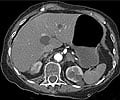Some one-third of the world''s smokers live in China, and chronic diseases caused by smoking are a growing burden to public health in the country.

Because patients in the U.S. are advised to abstain from smoking for as long as possible both before and after surgery, the study''s lead author believes it represents a golden opportunity for people to take action to quit, and he is committed to supporting the campaign across the globe.
"Every year, in the United States, we care for up to 10 million smokers in surgery. (1,2 ) We continue to work to reduce the number of patients who enter surgery as smokers. There''s a tremendous need in China to do the same. This study was designed to be the first step in how we might support anesthesiologists'' work with their patients to get them to quit smoking prior to surgery," said David O. Warner, M.D., lead author on the Chinese smoking study and chair of the ASA Smoking Cessation Initiative Task Force. "Anesthesiologists are the heart and lung specialists in the operating room, making sure our patients'' vital functions are working properly. Science proves that patients who quit smoking prior to surgery heal better."
An estimated 30 to 40 million Chinese citizens undergo surgery each year, and many of these patients are smokers. According to Dr. Warner, this places these patients in contact with an anesthesiologist who may be able to help him/her stop smoking.
About the Study
Dr. Warner and his team distributed surveys to 800 Chinese anesthesiologists at a Chinese medical meeting in 2009. The response rate was just over 60 percent and 10 percent of the anesthesiologists reported smoking themselves. The latter statistic is down from 23 percent in 2004.
Here''s how the respondents reported they manage interactions with patients who smoke, as well as how the results compare to U.S. reports:
•Most respondents (73 percent) frequently, or almost always, asked whether the patient smoked (vs. 96 percent in the U.S.)
•Sixty percent of the respondents advised patients to quit (vs. 57 percent in the U.S.)
•Most respondents agreed that it was his/her responsibility as the anesthesiologist on the case to advise the patient about the dangers of smoking; few knew how to counsel about smoking or point patients to the resources they need to quit
"Most importantly, we learned that Chinese anesthesiologists recognize their responsibilities, and are willing to spend extra time to help their patients quit smoking," said Dr. Warner. "This survey is the first step in a bigger initiative to support Chinese anesthesiologists in this effort. Much like the work we are doing in the U.S., Chinese anesthesiologists'' support of this work could further improve Chinese patients'' surgical outcomes as well as patients'' long-term health."
For More Information on ASA''s Stop Smoking Campaign
Please visit www.LifelinetoModernMedicine.com for more information on smoking cessation.
New for 2010 in Anesthesiology
As part of a mission to promote new discoveries and influence clinical practice, the January issue of Anesthesiology marks the debut of a newly designated "Education" section. This section is designed to highlight clinical material, making it more accessible and relevant for implementation in everyday clinical practice.
Source-Newswise
RAS
 MEDINDIA
MEDINDIA




 Email
Email










